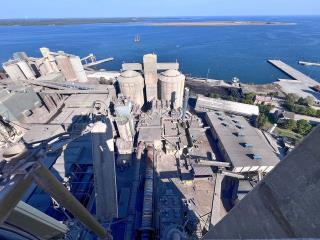As cement companies aim to lower their carbon footprint by reducing the clinker factor in their final product, clinker substitution features high on the agenda. The use of silica fume and rice husk ash provide options to replace clinker without affecting compressive strengths of cement mortars. By Feryal Çelik, Mardin Çimento, Turkey.
Silica fume and rice husk ash are classified as artificial pozzolans. Pozzolan is a siliceous (SiO2) and aluminous material which, in itself, possesses little or no cementitious value but which will, in finely-divided form and in the presence of water, react chemically with calcium hydroxide [Ca(OH)2] to form compounds possessing cementitious properties. Calcium silicate hydrates (CaO.SiO2.H2O) and calcium hydroxide [Ca(OH)2] occur with hydrates of the main Portland cement components. Finely-divided pozzolans react with this calcium hydroxide [Ca(OH)2] to form an additional binder material called calcium silicate hydrate, which is very similar to the calcium silicate hydrate (CaO.SiO2.H2O) formed from Portland cement.
